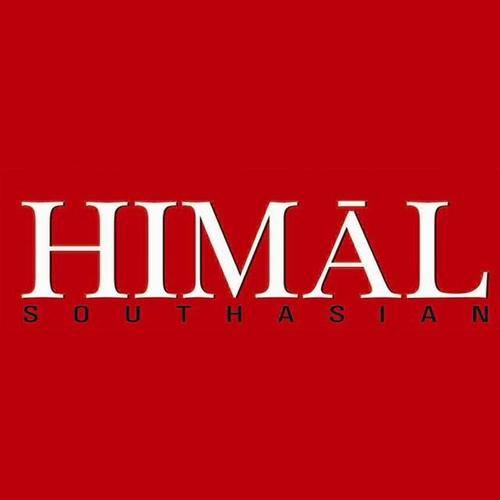Days after the blaze began, survivors started reporting cold calls from out-of-state investors hoping to scoop up their property for bargain bin prices. On one Facebook thread, several Maui realtors described receiving similar calls. One of them told Jacobin that he received a call on August 9, just one day after the fires began.
Like most locals in the close-knit Maui community, the realtor was disgusted by the opportunism.“It’s been bottom-feeders calling us, asking about what kinds of lands we have available,” he said. “This is not the time. It’s unfathomable what people are going through with loss of life, that they would be calling. But I guess that’s America.”
Land speculation in the wake of natural disasters is hardly unique to Maui. In the months after Hurricane Michael tore through the Florida Panhandle in 2019, home sales rose by double digits in the county most affected. After the 2017 fire in Santa Rosa, California, sales jumped 17 percent. Every time a town is destroyed, the buy-low mentality that drives investment kicks in.
In her 2007 book The Shock Doctrine, Naomi Klein describes the phenomenon of “disaster capitalism,” where private interests descend on a torn-up region in the wake of a natural or manmade disaster, snatching up land and chunks of the public sphere in a feeding frenzy, while their allies in government ram unpopular neoliberal programs past the distracted public. Klein describes the process of disaster capitalism as cyclical, as the consolidation of private power in the aftermath of disaster often weakens public infrastructure and contributes to climate change, facilitating more disasters.
Post-Katrina New Orleans is the poster child for disaster capitalism. Shortly after that hurricane made landfall, an ancient Milton Friedman, still able to muster a Wall Street Journal op-ed at ninety-three years old, declared the storm an “opportunity to radically reform the educational system.” The city took his lead, pursuing an aggressive voucher program for private and charter schools, and soon the district had become the most privatized in the country, with union teachers laid off en masse. Others took the opportunity to privatize public housing, replacing it with condos and town houses that priced out long-time residents. In the ensuing years, private interests collaborated with an allied government to blast through projects and policies that turned the battered city of New Orleans into a free-market idealogue’s dreamscape.
On Maui, the disaster capitalists have drawn near-universal condemnation (though conservative libertarian think tank American Institute for Economic Research leapt to defend the practice with an op-ed titled “Maui Needs Speculators”). But while roundly denounced, these speculators aren’t breaking any laws. In fact, over the course of Hawaii’s history, the exploitation and oppression of its indigenous and working-class inhabitants has been mostly lawful. That is the nature of capitalism, which inevitably leads to economic relations and activities that are perfectly legal on the books, even when they clearly violate natural law.
Plantations and Disaster
There is plenty of blame to go around for the Lāhainā disaster, which has now become the deadliest American wildfire in more than a century. A siren system that could have alerted residents to the fires in time to save lives was inexplicably not activated. A downed power line may have sparked the blaze, and Hawaiian Electric didn’t make the upgrades to its system that could have prevented this. Water infrastructure collapsed during the firefighting effort and vital hydrants ran dry. Climate change, of course, set the stage for the fires.
A contract between a multiracial union local and a Lāhainā plantation, housed in the Old Lāhainā Courthouse Museum. The museum has burned down, and this document is almost certainly lost. (Courtesy of Guthrie Scrimgeour)
But much of the blame should be laid at the feet of the owners of the plantations that dominated the Hawaiian Islands’ economy, government, and ecology for the better part of its post-contact history. For decades, plantations like Lāhainā’s Pioneer Mill Company exploited the local environment and labor force before leaving their lands as dried out husks that helped spread the blazes.
When sugarcane and pineapple plantations began to form in the mid-1800s, they were only barely distinguishable from slave plantations. Native Hawaiian and migrant workers signed three- or five-year contracts with their employers and could be jailed for “deserting.” Plantations had set bedtimes for workers, drove them to work with dogs, fined them for lateness, and paid pennies on the dollar compared to laborers elsewhere in the world. The plantation barons were the disaster capitalist speculators of their day — buying low in the wake of colonial plunder, cutting labor costs by every legal measure, and going on to accumulate massive fortunes. Their power became so enormous that they were able to orchestrate the illegal overthrow of the Hawaiian Kingdom in 1893.
Though plantation owners aimed to keep different ethnic groups separate, these places somehow managed to develop into a model of cross-cultural collective action. Chinese, Japanese, Filipino, Puerto Rican, Portuguese, and Native Hawaiian workers shared meals at work, resulting in the mishmash of foods found in popular plate lunches in Hawaii today. Eventually the workers began to form labor unions, first separated by ethnicity but eventually joined together by the International Longshore and Warehouse Union, into a powerful force able to dramatically improve working conditions.
But decades later, as sugar production began shifting to places like the Philippines and Indonesia where labor protections were weaker, plantations on Hawaii like the Pioneer Mill Company began to shut down. This took the bottom out of the local economy, as now-solid union jobs were replaced by generally unorganized jobs in the tourism industry. As tourism thrived, the hyper-wealthy began buying up land, leaving locals priced out of the market.
The land itself began to mirror the hollowed-out economy. Over the decades, loosely regulated water diversions to feed the plantations left regions like Lāhainā — once a wetland — dry and arid. Though some former plantation land was replaced by tourism-centered development, many were abandoned, and their former fields were overtaken by invasive grasses. It was these highly flammable invasive species that allowed a fire to grow into the infernal blaze that consumed Lāhainā.
The general disregard for public welfare encouraged under capitalism ravaged the islands’ economy and brought the land to the point of environmental collapse. In the words of Kaleikoa Ka’eo, a professor of Hawaiian Studies at the University of Hawai‘i Maui College during an interview on Democracy Now!, “The looting of the land itself became the tinder.”
Investing Against Disaster
As it moves toward recovery, Lāhainā is facing a fundamentally different political landscape than New Orleans in 2005, and there are positive signs that the free-market orgy that happened after Katrina may not take place there.
With the history of the US land grab embedded in the public consciousness in Hawaii, locals are particularly protective of generational families’ lands and consequently have organized mutual aid networks to protect survivors from speculators. Gov. Josh Green signaled that he may pursue positive measures, like state acquisition of certain burned lands for public use or a temporary moratorium on sales of affected properties. (Unfortunately, Green seems like less of an ally in a brewing fight over water rights.)
Any such commitments should be monitored as the recovery process goes along, and the public resources that once stood in Lāhainā — state-managed affordable housing projects, public schools, beaches, parks, Department of Hawaiian Home Lands properties, which offer $1 homestead leases to Native Hawaiians, and hard-fought water rights — must be protected.
Preventing the speculative looting of the town is one thing, but there is so much more that could have and still needs to be done to protect the most vulnerable from natural disasters. The area in West Maui that caught fire was known to be at fire risk before the blazes. Hawaii, which spends far less on wildfire prevention per capita than other fire prone states, could have made simple investments that would have undoubtedly saved lives, like clearing flammable grasses, building fire breaks, and developing more precise emergency alert systems. Those measures should be implemented immediately.
And wildfires are not the only threat to the Hawaiian Islands, which, like much of the United States, now face the dual problem of crumbling infrastructure alongside increased risk of natural disaster as climate change begins to make its impact felt. Failing bridges and dams, inadequately addressed by governments pursuing austerity, could easily trigger the next deadly disaster.
Repairing this infrastructure and preparing for inevitable climate crises will require an unprecedented investment in public works. The cost of these measures should be shouldered not by the working people of the state, but by the millionaires and billionaires who have been buying up Hawaiian land by the hundreds of acres.
As the fires show, there is no shortage of billionaires on the Hawaiian Islands with money to throw around. Led by Jeff Bezos’s $100 million pledge, the superrich that own land on the islands have poured millions into relief efforts and made sure to publicize those donations. But private charity in the wake of disaster is not enough.
Even a fraction of that money, if acquired proactively through taxes and spent democratically, could have saved lives in Lāhainā and could prevent countless future disasters.
Guthrie Scrimgeour writes about politics and public safety at a local newspaper in rural Hawai‘i.
Photo: State Farm / Wikimedia Commons


